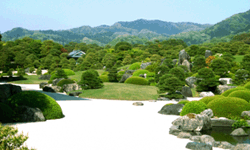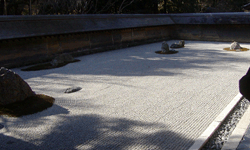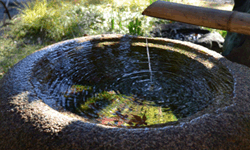
English | Japanese

English | Japanese



Talking about Japanese gardens, there are roughly three types of traditional Japanese Garden. They are a landscape strolling garden, Kare-sansui or a dry landscape garden and a tea garden.
A landscape strolling garden is
the general Japanese garden what comes to your mind, which is composed of ponds, rocks, trees and flowers, bridges and other natural objects. Some gardens of this type also involve “Shakkei” or “borrowed landscape”, which is the
incorporation of outside or surrounding landscapes into the design of a garden. Most big such strolling gardens are succeeded from the gardens of old feudal lords, such as Hamarikyu Gardens and Koishikawa Korakuen Gardens etc.
A Karesansui garden is a dry landscape garden, mainly composed of rocks and sand and no water. The rocks represent mountains or islands, while the sand represents the sea of rivers. Most famous dry landscape garden is
in Ryoan-ji temple in Kyoto.
A tea garden is often called “Roji (outdoors)”. Tea ceremony is deeply related with Zen Buddhism in which people try to attain enlightenment even in harsh natural environments. Therefore, “Roji” usually has only natural
trees, stepping stones to the tea house and "Tsukubai" or a wash basin to purify hands and mouth along with his or her spirit before the ceremony.